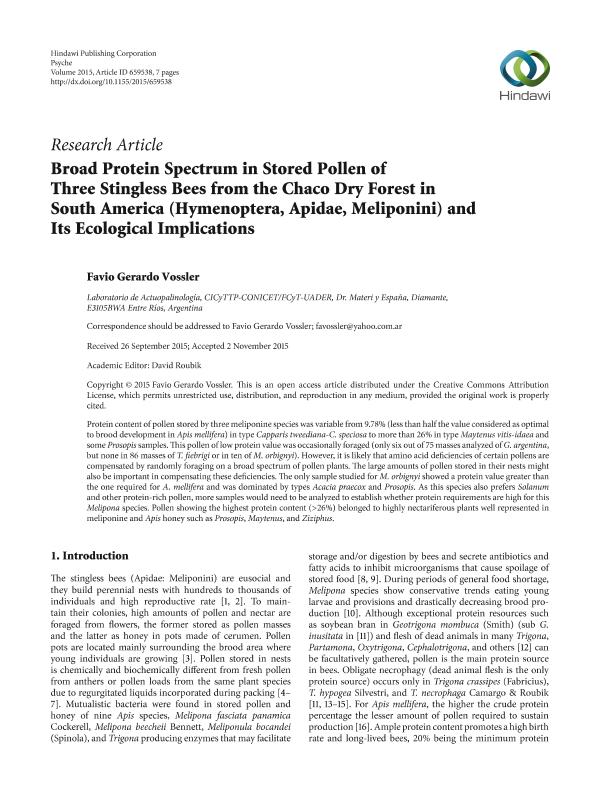Artículo
Broad Protein Spectrum in Stored Pollen of Three Stingless Bees from the Chaco Dry Forest in South America (Hymenoptera, Apidae, Meliponini) and Its Ecological Implications
Fecha de publicación:
11/2015
Editorial:
Hindawi Publishing Corporation
Revista:
Psyche (New York)
ISSN:
1687-7438
Idioma:
Inglés
Tipo de recurso:
Artículo publicado
Clasificación temática:
Resumen
Protein content of pollen stored by three meliponine species was variable from 9.78% (less than half the value considered as optimal to brood development in Apis mellifera) in type Capparis tweediana-C. speciosa to more than 26% in type Maytenus vitis-idaea and some Prosopis samples. This pollen of low protein value was occasionally foraged (only six out of 75 masses analyzed of G. Argentina, but none in 86 masses of T. fiebrigi or in ten of M. orbignyi). However, it is likely that amino acid deficiencies of certain pollens are compensated by randomly foraging on a broad spectrum of pollen plants. The large amounts of pollen stored in their nests might also be important in compensating these deficiencies. The only sample studied for M. orbignyi showed a protein value greater than the one required for A. mellifera and was dominated by types Acacia praecox and Prosopis. As this species also prefers Solanum and other protein-rich pollen, more samples would need to be analyzed to establish whether protein requirements are high for this Melipona species. Pollen showing the highest protein content (>26%) belonged to highly nectariferous plants well represented in meliponine and Apis honey such as Prosopis, Maytenus, and Ziziphus.
Palabras clave:
Protein Content
,
Nitrogen Level
,
Stored Pollen
,
Meliponini
Archivos asociados
Licencia
Identificadores
Colecciones
Articulos(CICYTTP)
Articulos de CENTRO DE INV.CIENT.Y TRANSFERENCIA TEC A LA PROD
Articulos de CENTRO DE INV.CIENT.Y TRANSFERENCIA TEC A LA PROD
Citación
Vossler, Favio Gerardo; Broad Protein Spectrum in Stored Pollen of Three Stingless Bees from the Chaco Dry Forest in South America (Hymenoptera, Apidae, Meliponini) and Its Ecological Implications; Hindawi Publishing Corporation; Psyche (New York); 2015; 11-2015; 1-7
Compartir
Altmétricas




